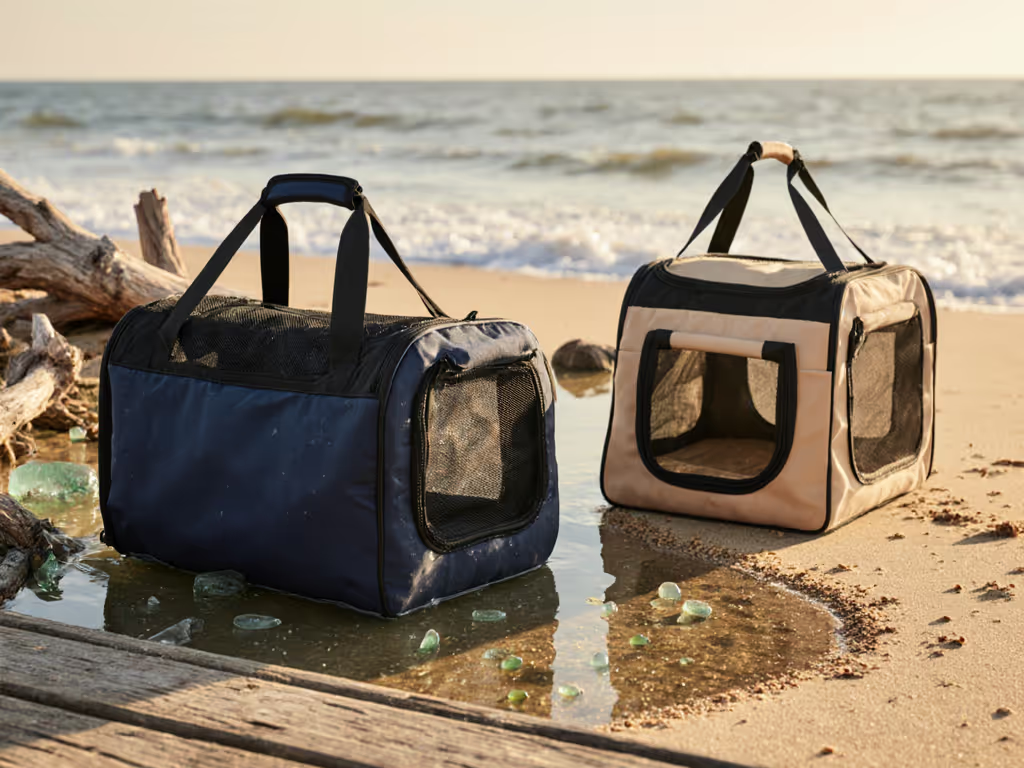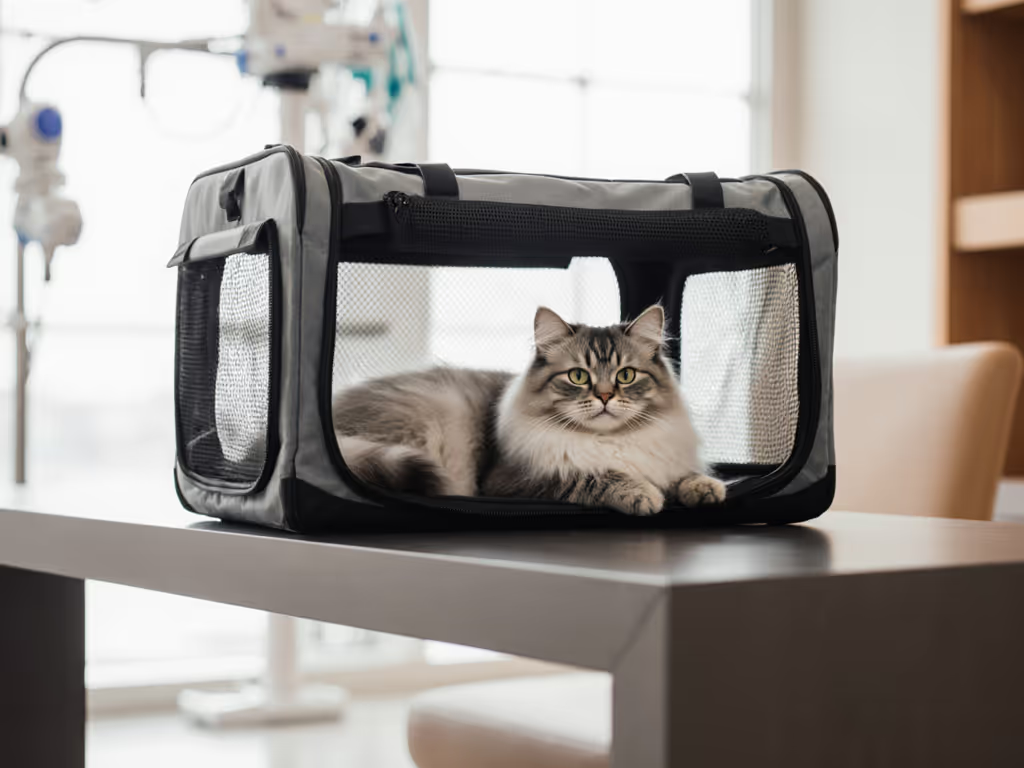
Long-Bodied Dog Carrier Guide: Perfect Fit for Dachshunds & Spinal Safety
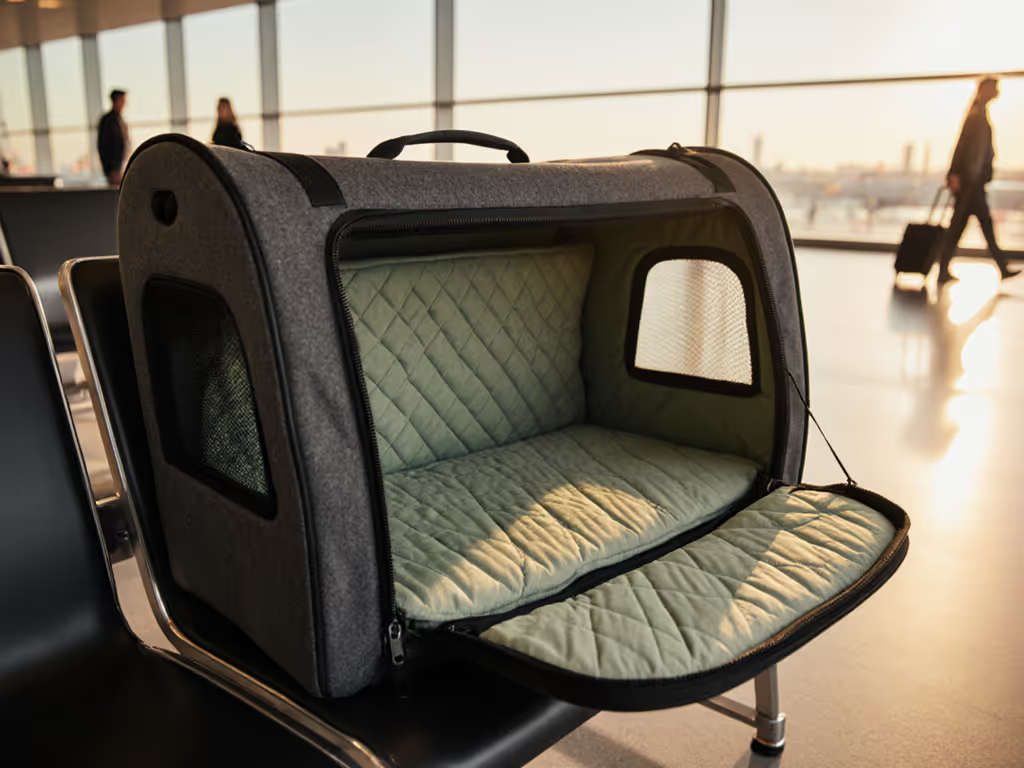
When selecting travel pet carriers for dachshunds, the compromise between spinal safety and airline compliance shouldn't exist. As someone who's traveled with long-bodied breeds across three continents, I've learned that the right dachshund carrier transforms stressful journeys into seamless experiences. Good design should disappear in public and deliver in use (whether you're navigating airport security or a mountain trail). The right carrier operates as both medical safeguard and travel companion, where rule-checked dimensions meet visual minimalism. Blend in visually, stand out in quiet function.
Why Standard "Length" Measurements Fail Long-Bodied Breeds
Most carriers measure "length" from nose to tail, but for dachshunds, the critical metric is chest-to-rump measurement, the span that determines spinal alignment. A standard 12-inch dog carrier might accommodate a terrier's compact frame, but it forces a 16-inch dachshund into an unnatural curved position that strains intervertebral discs during movement.
Airline seat dimensions under 18x11x9 inches demand precision engineering for long-bodied dogs, where a single inch of extra width can mean gate denial yet insufficient length risks spinal compression.
Consider this data point: Dachshunds require at least 13.5 inches of internal bottom length to maintain their natural horizontal posture. The Timbuk2 Muttmover, for example, features exactly 13.5 inches of width at the base, a specification verified through actual boarding scenarios rather than theoretical measurements. This precision transforms what could be a spinal hazard into a supportive environment where your dog can distribute weight across all four limbs.
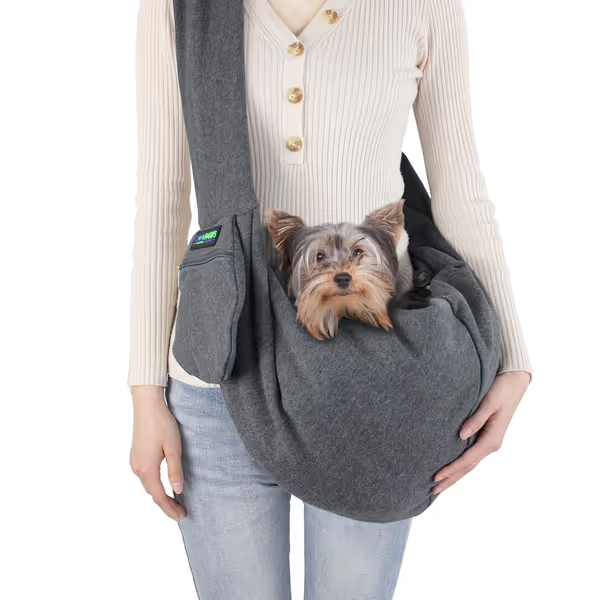
Comfy Pet Sling
How to Verify "Rule-Checked Dimensions" Beyond Marketing Claims
"Compliant with most airlines" labels create dangerous assumptions. For a clear breakdown of requirements and prep steps, see our airline approval checklist. At CDG boarding gates, I've witnessed sleek work bags sail through while bright pet totes drew scrutiny, proof that visual discretion matters as much as dimensional compliance. True rule-checked dimensions require:
- Three-point verification: Measure your specific airline seat (under seat dimensions vary by aircraft model)
- Compression test: Load your carrier with equal weight to your dog and check flexibility
- Agent visual assessment: Will the carrier read as professional luggage rather than "pet baggage"?
Many "small dog" carriers claim 18-inch height limits but neglect to mention that mesh panels compress less than rigid sides during security screening. For dachshunds, prioritize carriers with expandable rigid bases that maintain shape under pressure, critical for spinal alignment during turbulence or sudden movements. The difference between "fits" and "rule-checked" comes down to whether you've tested the carrier with your actual airline seat model and boarding agent expectations.
The Ventilation vs. Discreet Design Balance: Non-Negotiable Tradeoffs
I won't trade ventilation for looks, a boundary established through firsthand experience when a client's dachshund overheated in a stylish but poorly ventilated carrier. Long-bodied breeds require strategic airflow placement that accommodates their extended torso:
- Side mesh must extend 75% of the carrier's length, not just the front third
- Top ventilation should allow head elevation without compression
- Breathable panels should avoid positions that create "wind tunnel" effects during movement
Look for carriers that integrate ventilation through capsule-wardrobe logic, where mesh placement serves dual purposes as structural elements and airflow channels. The most effective designs position ventilation zones to align with natural resting postures, creating airflow paths that follow the dog's spinal curve rather than cutting across it.
Multi-Mode Functionality That Doesn't Scream "Pet Bag"
Urban travelers need carriers that transition seamlessly from subway to aircraft to café seating. This requires modular integration with your existing luggage system:
- Trolley sleeves that accommodate standard roller suitcases
- Exterior dimensions that match premium backpack proportions
- Neutral palettes that coordinate with business casual attire
I've watched savvy travelers breeze through security with carriers that read as technical backpacks, featuring clean lines, refined hardware, and dimensions that fall within standard personal item allowances. The visual minimalism vocabulary matters: carriers with branding limited to subtle interior tags, matte finishes that don't reflect light, and proportions that echo professional camera bags rather than obvious pet containers.
The Spinal Safety Checklist: Beyond Basic Measurements
When evaluating breed-appropriate carriers, focus on these medically informed specifications:
- Rigid base length must equal 95% of your dog's chest-to-rump measurement (measured while standing)
- Internal height should allow natural head elevation (measure from floor to top of ears while alert)
- Support zones must provide continuous contact points along the entire spine
- Weight distribution should keep center of gravity low and centered
For carriers claiming "dachshund specific" design, verify whether they accommodate both standard and miniature varieties. A carrier marketed for "up to 16 lbs" may fit a miniature's weight but lack sufficient length for a standard dachshund's frame. Always measure your specific dog in multiple resting positions (sphinx, curled, and stretched) before selecting dimensions.
Conclusion: Confidence Through Precision
The right long-bodied dog carrier operates as silent insurance, protecting your dachshund's spine while eliminating boarding anxiety. By prioritizing rule-checked dimensions over vague "fits most airlines" claims, you gain confidence at every travel stage. Remember that style isn't decoration; it is choosing forms that don't invite scrutiny while performing their critical function.
For those seeking deeper verification, I recommend downloading airline-specific dimension templates and practicing "mock boarding" with your carrier. Next time you're selecting travel pet carriers, ask whether the design would blend seamlessly with professional luggage, or draw unnecessary attention that could delay your journey. Your dachshund's spinal health and your travel confidence depend on this precision.
Blend in visually, stand out in performance that ensures both your comfort and your companion's safety.
Related Articles

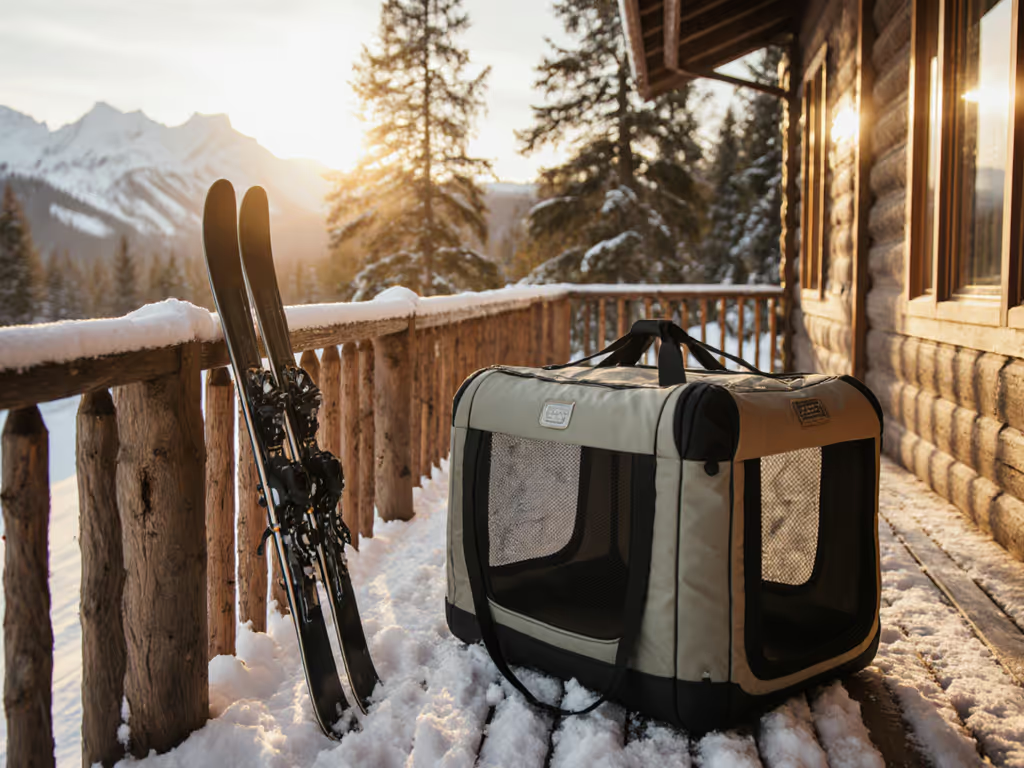
Winter Sports Pet Carrier: Ventilation & Sizing Guide
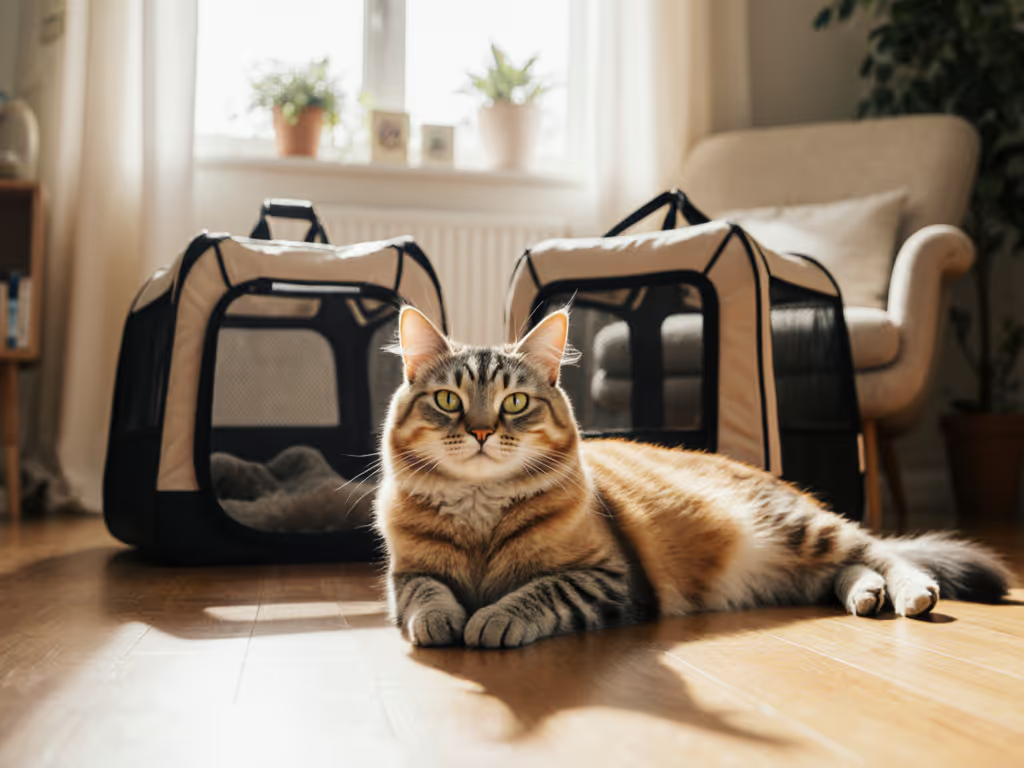
Senior Cat Carriers: Hard vs Soft Gentle Entry Guide
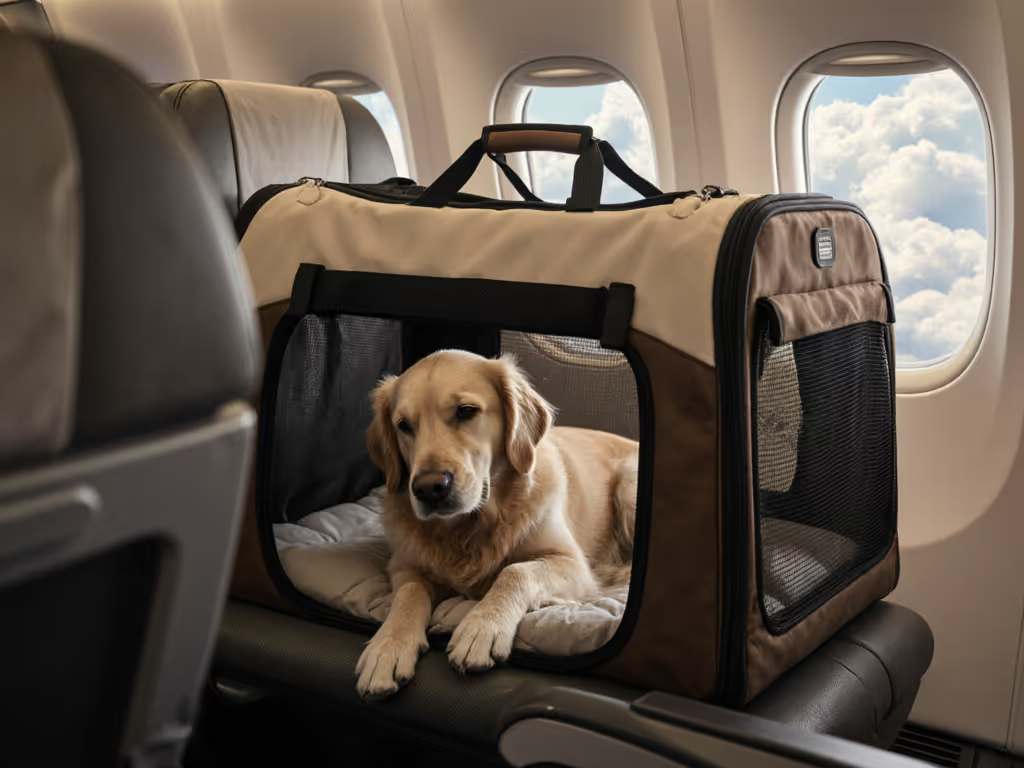
Arthritis-Friendly Pet Carriers: Large Comfort Travel Tested
